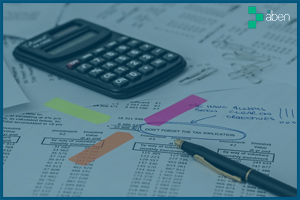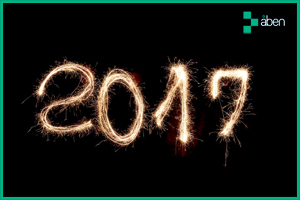
Flat Rate VAT – What is it and Who Does it Work For?
What is flat rate VAT? Aben Bookkeeping explains why it might be something for you to think about for your business
This time around we thought it'd be useful to look at flat rate VAT, the scheme introduced in 2002 designed to help small businesses and sole traders. It's different from standard VAT. You pay a percentage of your turnover instead of paying VAT on the difference between your sales and purchases. It means you charge VAT on your invoices at 20%, the 2014 rate, and pay back HMRC at a lower rate. It can make a real difference. But like most of HMRC's initiatives, it isn't exactly simple to get to grips with.
The FRS is popular with contractors, freelancers and consultants. It's also popular with businesses that don't make many VAT-able purchases and expenses, in other words don't buy a lot of goods or stock. As you can imagine, plenty of small businesses and individuals have benefited from it. In fact plenty of businesses have been voluntarily registering for VAT before their turnover reaches the VAT threshold, using the scheme to their advantage. And that's what has led to the changes due in April 2017. While the FRS will carry on, it's going to be less beneficial in future.
Here's a look into what the FRS means now, and what will change for the new financial year.
The current state of FRS
Usually, the VAT businesses pay to or claim back from HMRC is the difference between the VAT charged to customers and that paid out for business purchases. The flat rate scheme is different. At the moment you pay fixed-rate VAT. You hang onto the difference between what you've charged your customers and what you pay to HMRC. And you can't reclaim the VAT on the things you buy for the business expect for a few types of capital assets valued at more than £2000.

Can you join the FRS?
To join the scheme you have to have an annual VAT turnover of £150,000 or less and run a VAT-registered business. You can't join if you used to belong to it but left within the past 12 months, or you've committed a VAT-related offence in the past 12 months. If you joined a VAT group in the past 24 months or were eligible to join one, you can't apply. Nor can you join in if you registered as a business division for VAT in the last 24 months.
If your business is closely associated with another business you won't be able to apply, and the same goes if you've joined a margin or capital goods VAT scheme. Last but not least, you can't combine it with the Cash Accounting Scheme because the FRS has its own unique way of calculating business turnover.
When you have to leave the scheme
It's just as important to know when you're supposed to leave the scheme. If you no longer fit the eligibility rules, you need to leave. The same goes if, on the anniversary of your joining, you turned over more than £230,000 in the past 12 months or expect to turnover more than that during the 12 months to come. And if you expect your total income in the next 30 days alone to be more than £230,000 inc VAT. You can actually choose to leave the scheme at any time you like, simply by writing to HMRC, but bear in mind you won't be able to join it again for 12 months.
How much flat rate VAT do you pay under the FRS?
The VAT flat rate you pay is a percentage of your flat rate turnover, which in turn depends on the type of business you run. If the rate for your business type changes, you need to pay the new rate from the date it changes. On the bright side, if you're in your first year as a VAT registered business you can reduce your VAT flat rate by 1%, a reduction that lasts until the day before your first year anniversary.
To find out how much you'll pay based on your business type, click here (https://www.gov.uk/vat-flat-rate-scheme/how-much-you-pay).
Will you pay less VAT under the FRS?
If you don't have many business expenses, and you work in a sector that pays a relatively low FRS percentage, you'll probably pay less VAT than you would if you weren't in the scheme. But things are about to change.
New FRS rules from April 2017
If you are a so-called low cost trader, from 1st April 2017 your business will be liable for a 16.5% FRS percentage. What is a low cost trader? It's one where you spend less than 2% of your gross turnover or less than £1000 on goods (not services), not taking spending on capital items, motor expenses, food or drink into account.

Because 16.5% of gross turnover equates to 19.8% of the net, you're left with almost no credit for VAT on your purchases, making the whole thing a whole lot less attractive, especially for businesses who spend a lot on services like rent, telecomms and IT support.
What to do in 2017?
If you currently trade under the £83,000 VAT threshold it might make sense to de-register your business from VAT from 1st April 2017. If you make more than the £83k, you might need to leave the FRS from 1 st April. But, as ever, it makes a lot of sense to get expert advice to make the right decision based on your unique circumstances. That's what we're here for! If you need advice about the new-style FRS, we'll be delighted to help.
